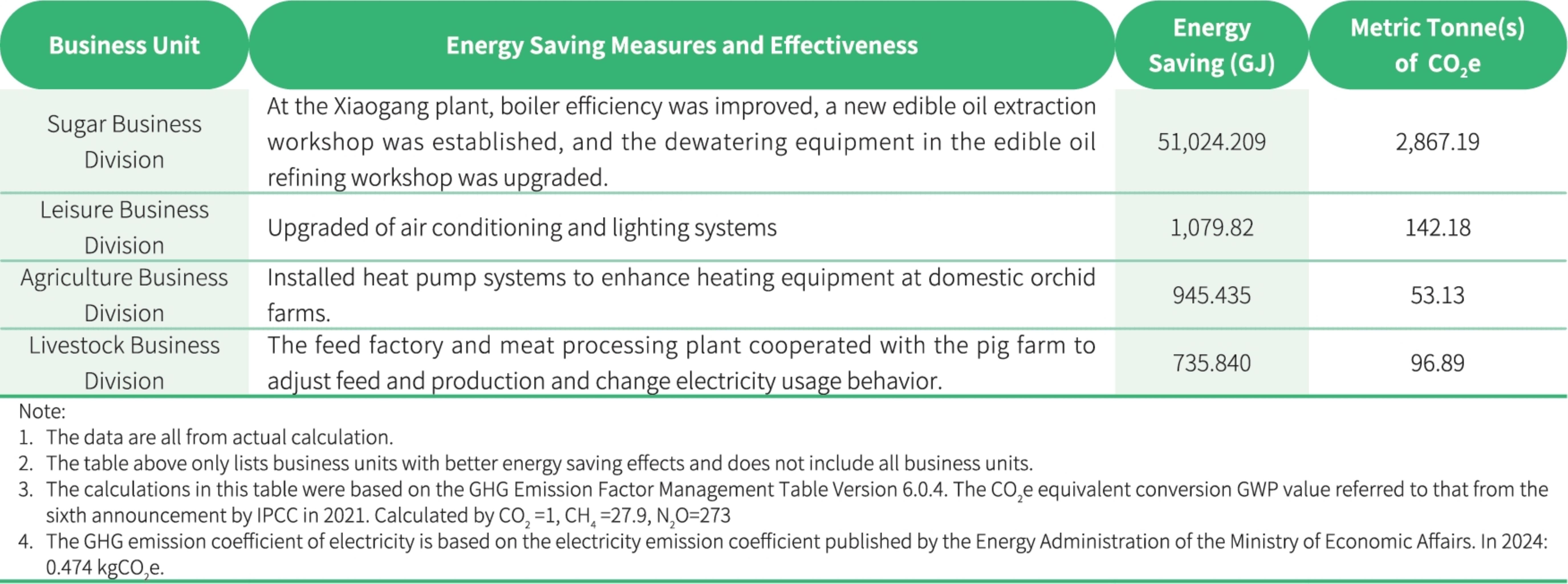To effectively implement the energy conservation and carbon reduction policy, TSC replaced existing low-energy-efficiency equipment (such as lights, chiller units, and air-conditioning equipment) for the Leisure, Marketing, Agriculture, Biotechnology, and Petroleum Business Divisions and staff units that are not major carbon emitters, adopted high-energy-efficient equipment and gradually phased electrification of official vehicles, and promoted energy conservation to reduce carbon emissions. Statistics show that in 2024, the total energy savings (including fixed and mobile sources) of each unit amounted to approximately 56,587.824GJ, reducing approximately 3,517.24 metric tonnes of CO2e
What is worth mentioning is that according to research, approximately 8% of global carbon emissions originate from the tourism industry. In addition to focusing on its own carbon reduction performance, TSC has also implemented various energy-saving, water conservation, waste reduction, and pollution control measures in its hotels, including the installation of solar panels and EV charging stations. In addition, we also actively promote the concept of sustainable tourism by encouraging reduced use of disposable amenities, advocating that guests bring their own toiletries, and opting out of daily linen changes- to minimize tourism’s environmental impact.
Taisugar Hotel Taipei, Evergreen Plaza Hotel, Liuying Jianshanpi Report, and Taisugar Hotel Hualien under the Leisure Business Division have successively obtained the "Green Mark Hotel- Bronze Level" certification. Each hotel has also launched an eco-friendly room discount project, inviting travelers to respond to environmental and sustainable actions and do their part to protect the earth.




